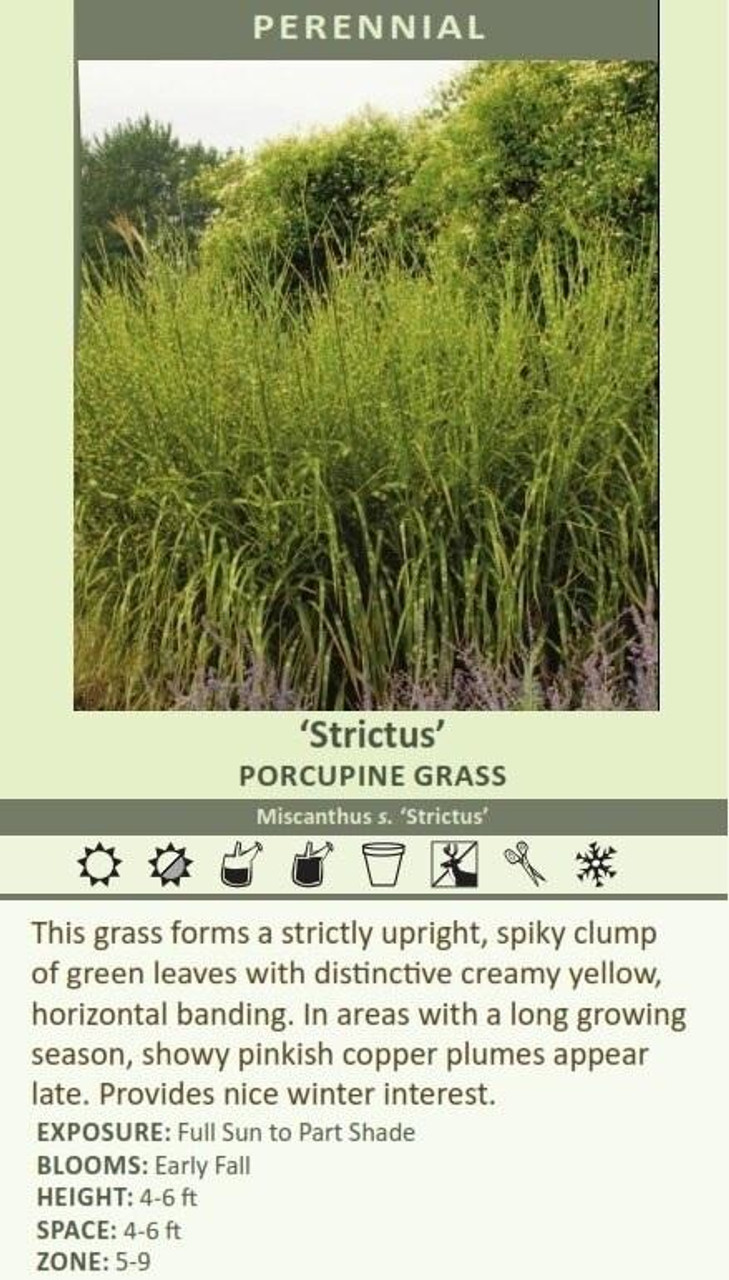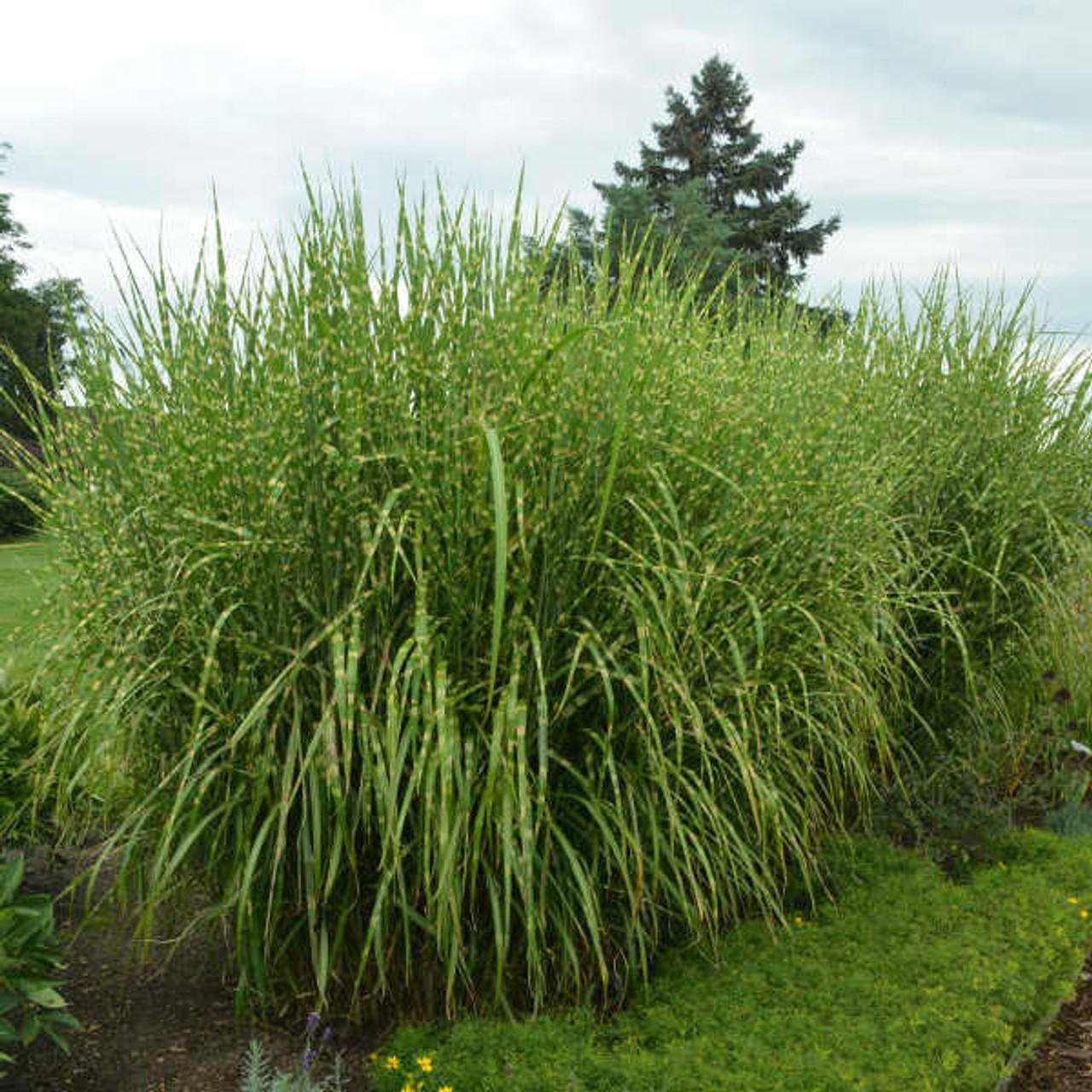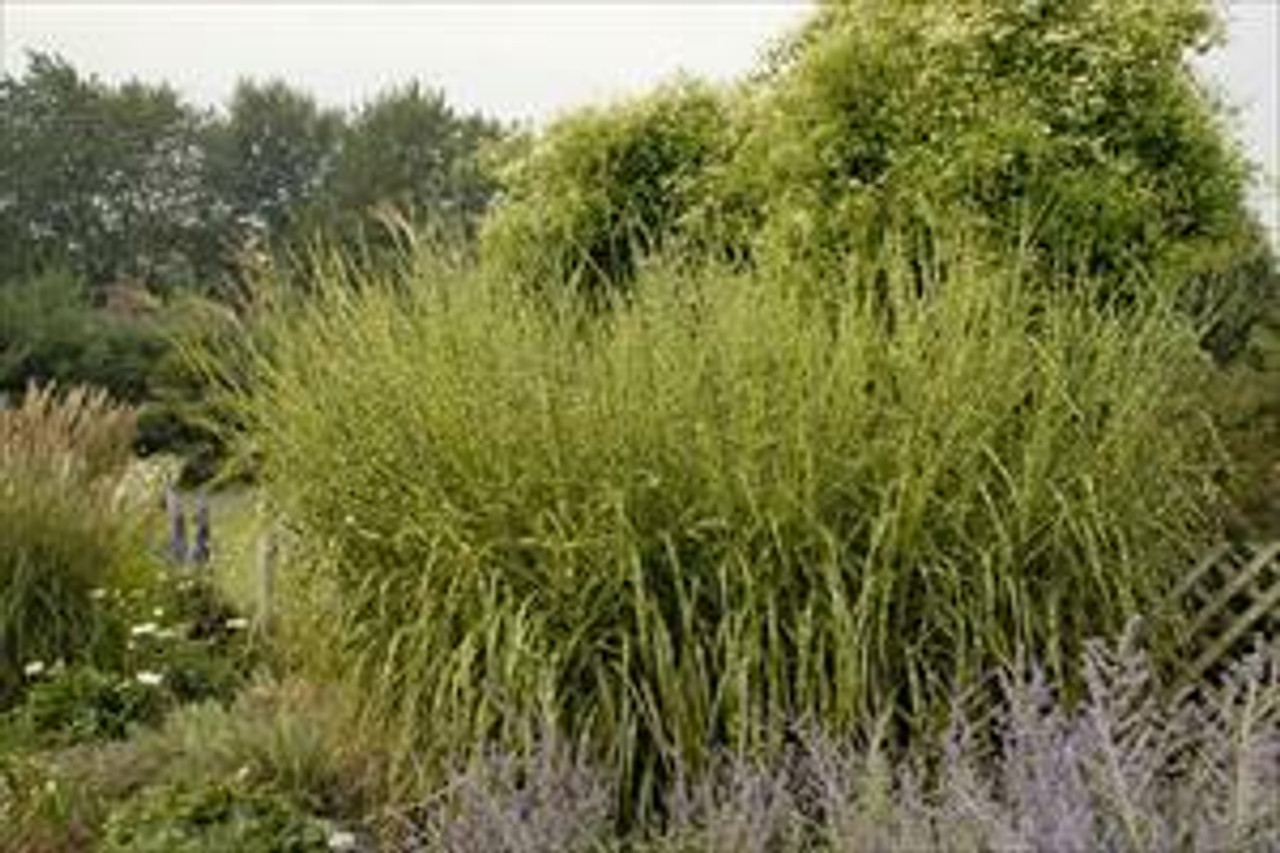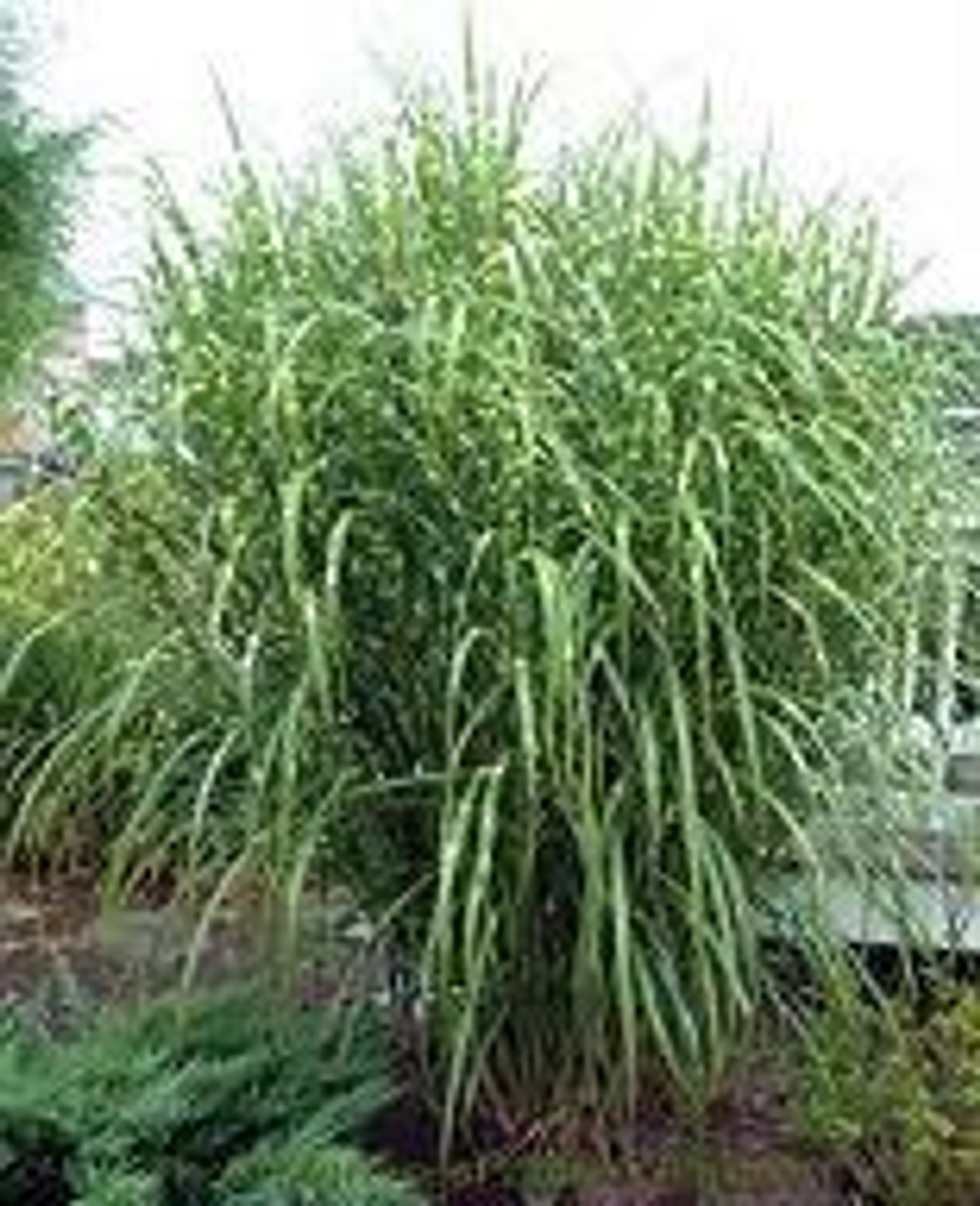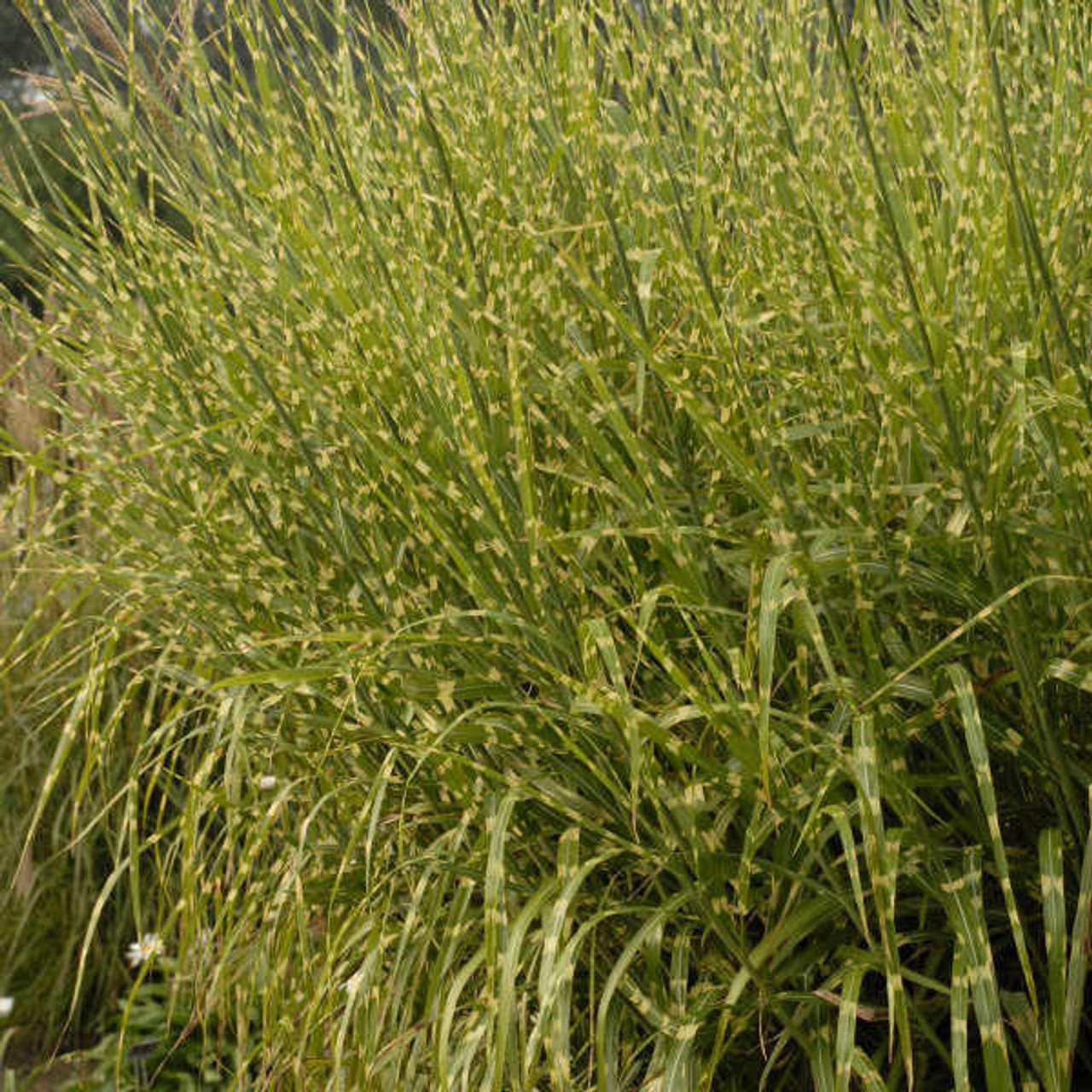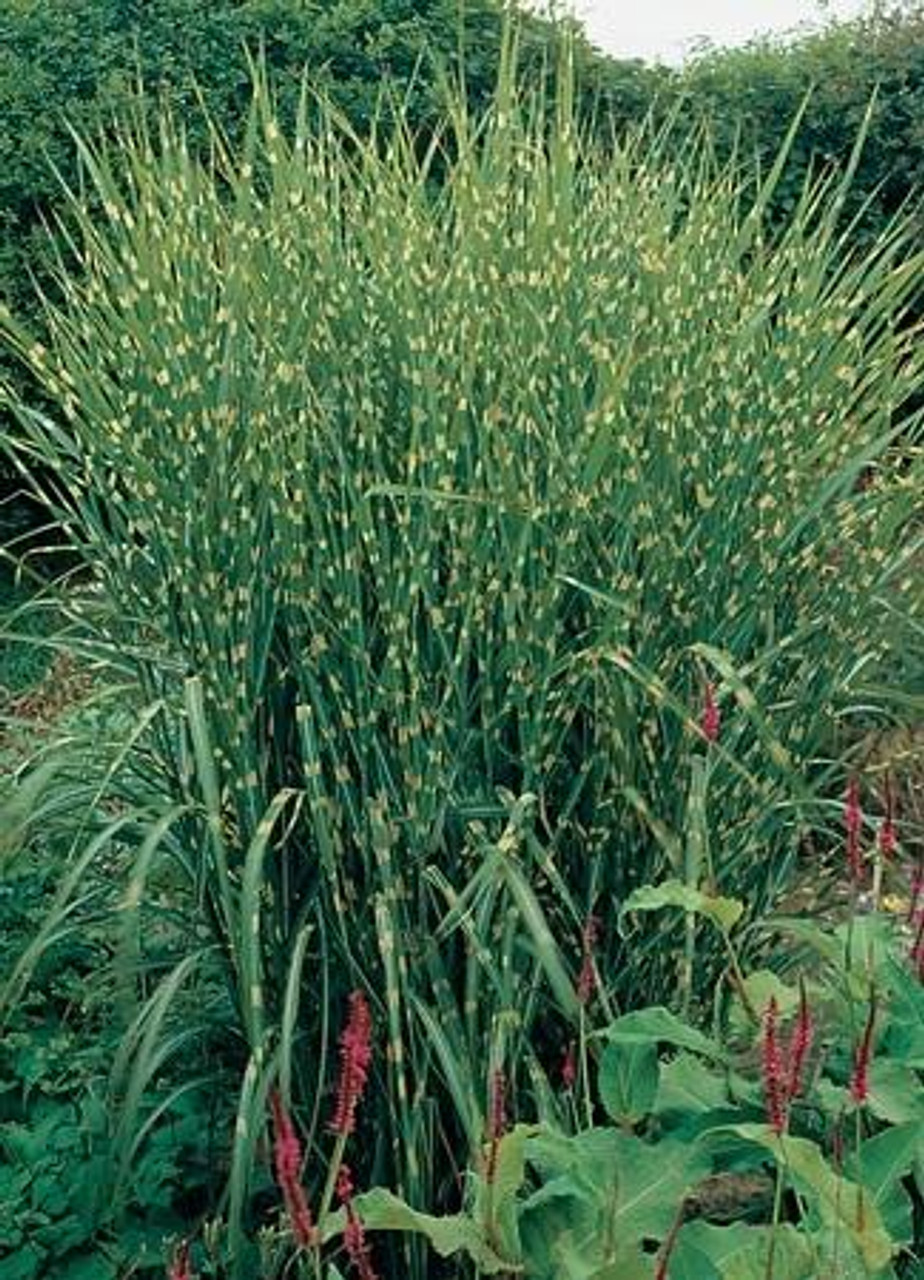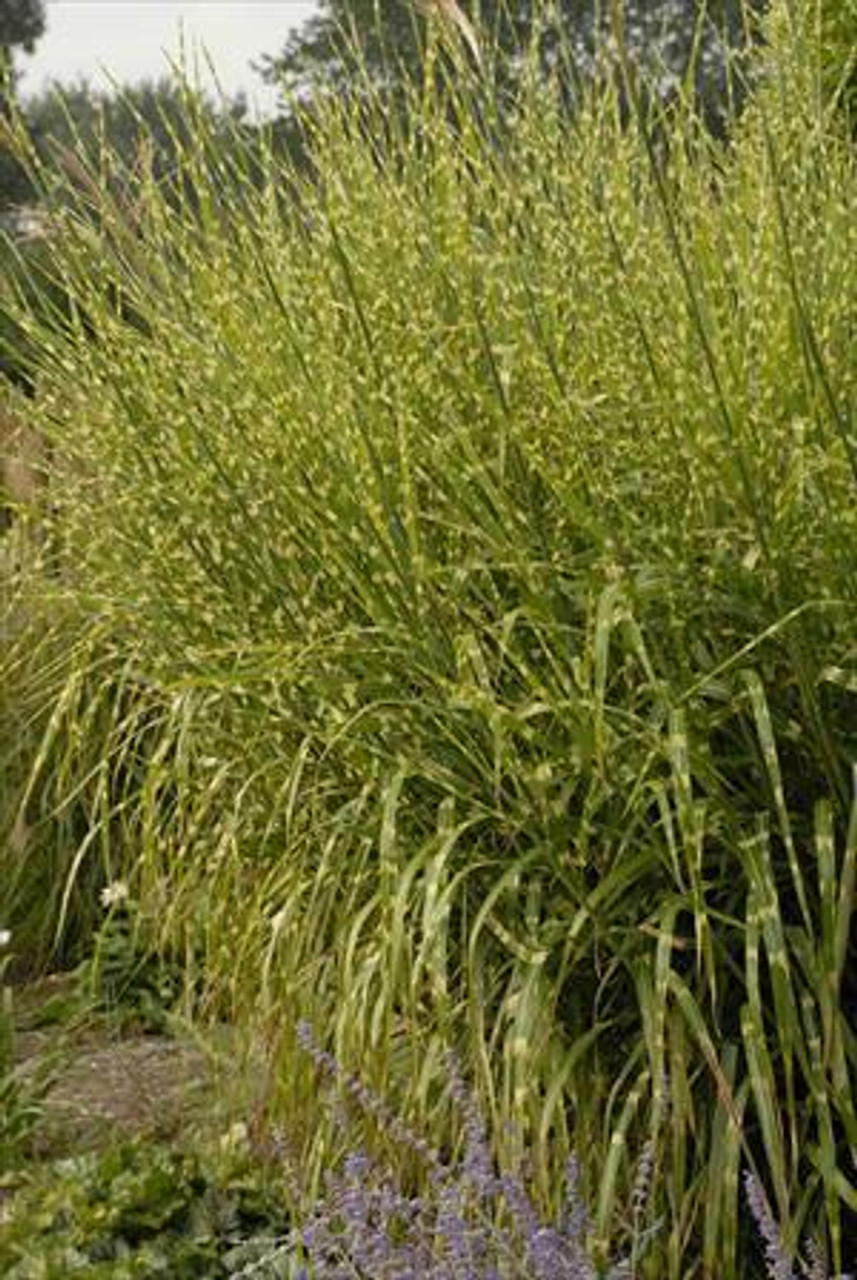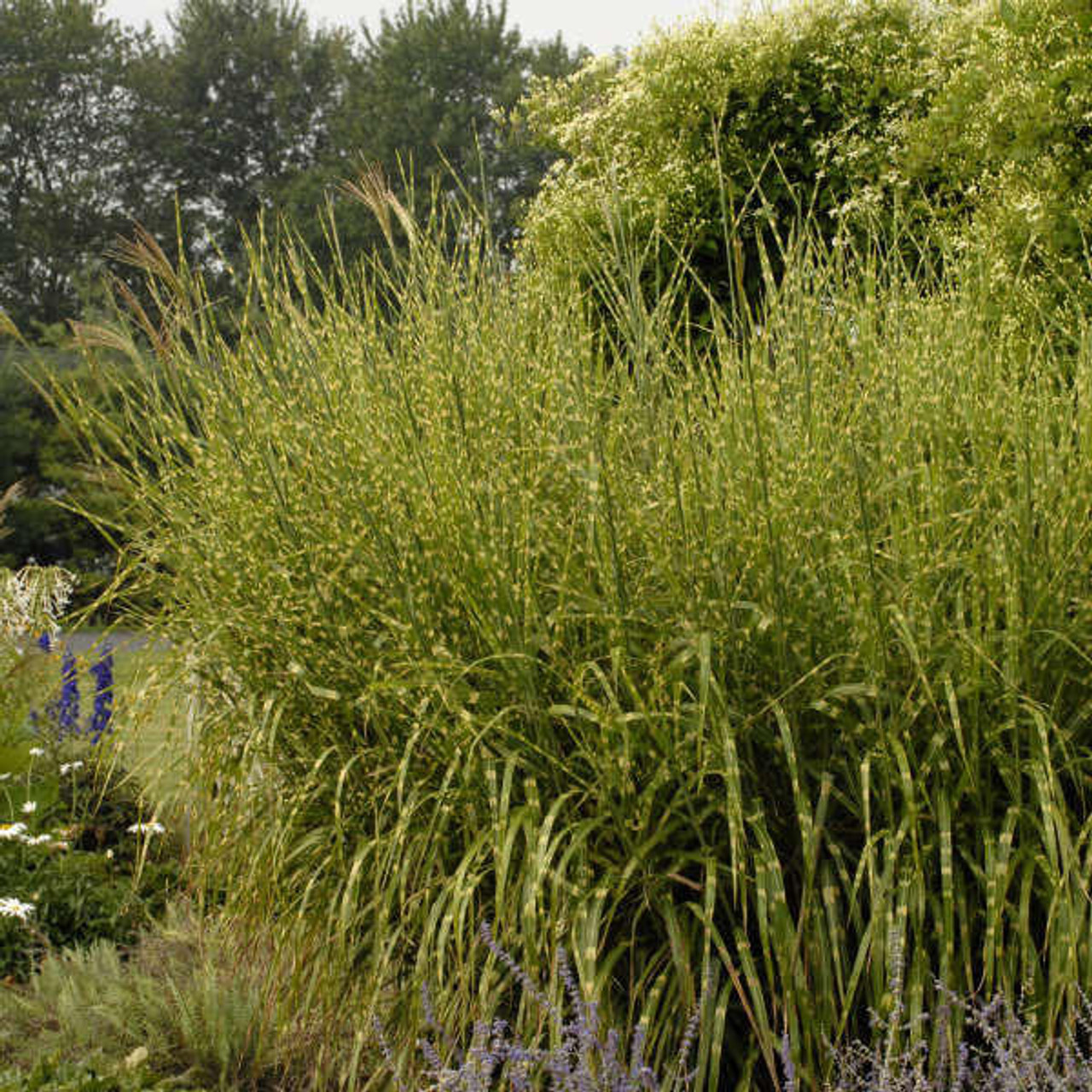Product Description
Miscanthus sinensis 'Strictus' (30)ct Flat
Common Name: Grass-Ornamental, Porcupine Grass, Miscanthus
Distinctive yellowish-white, horizontal banding on the leaves of this cultivar distinguish it from nearly all other grasses. These irregularly spaced marks seem to glow when backlit by the early morning or late afternoon sun. 'Porcupine Grass' is an upright, stiff grass whose leaves stretch skyward like porcupine spines, thus the name.
This is nearly identical to M. 'Zebrinus', differing primarily in form. 'Porcupine Grass' is an upright, stiff whose leaves stretch skyward instead of arching downward like those of M. 'Zebrinus'.
This requires a very long, hot growing season to be able to produce flowers. When it does, they are spectacular pinkish copper plumes that appear in early fall. As the seeds mature, they become fluffy, and are a great accent to the reddish-tan winter foliage.
Royal Horticultural Society's Award of Garden Merit 2001
Not available for shipment to NY
Height: 4.0-6.0 Feet
Spread: 4.0-6.0 Feet
Hardiness Zones: 5,6,7,8,9
Flower Color: Purple-red shades
Foliage Color: Variegated
Full Sun (> 6 hrs. Direct Sun) - Part Shade (4-6 hrs. Direct Sun)
Average to Consistent Water Needs
Poor to Average Soil Quality
Bloomtime: Early Fall
Deer Resistant
Seasonal Interest: Dried Seed Heads, Fall Color
Growth Rate: Medium
Border Plant, Container, Cut Foliage, Dried Flower, Easy To Grow, Mass Planting, Salt Tolerant, Specimen, Focal Point
Miscanthus sinensis 'Strictus', commonly called Porcupine Grass, is a striking ornamental grass known for its upright, columnar form and horizontally banded foliage. It adds a bold architectural element to gardens and provides excellent texture and movement. Here is a closer look at its key features:
Appearance:
- Upright, Columnar Habit: 'Strictus' has a distinctive upright growth habit, with stiffly erect stems that resemble porcupine quills. This gives it a formal and architectural presence in the landscape.
- Horizontally Banded Foliage: The medium green leaves are adorned with striking horizontal yellow bands, creating a unique and eye-catching pattern.
- Reddish-Bronze Plumes: In late summer, it produces reddish-bronze flowers in tassel-like inflorescences that rise above the foliage. These gradually mature into silvery plumes in fall, adding another layer of interest.
Growing Conditions:
- Sunlight: Thrives in full sun (at least 6 hours of direct sunlight per day) for the best color development and flowering. It can tolerate some light shade, but the variegation and fall color may be less intense.
- Soil: Adaptable to a wide range of soils, from well-drained sandy soils to heavy clays.
- Hardiness Zones: Suitable for USDA hardiness zones 5-9, making it a versatile choice for many gardeners.
Care:
- Low Maintenance: 'Strictus' is a relatively low-maintenance grass.
- Cutting Back: Cut back the foliage to the ground in late winter or early spring before new growth emerges.
- Dividing: Divide clumps every few years in spring to maintain vigor and prevent overcrowding.
Uses:
- Specimen Plant: Its upright, architectural form makes it an excellent specimen plant, adding a focal point to the landscape.
- Screens and Hedges: Can be used to create a screen or hedge for privacy.
- Borders: Adds height, texture, and a vertical element to borders and beds.
- Mass Plantings: Creates a dramatic effect when planted in groups.
- Erosion Control: The strong root system helps to control erosion on slopes and banks.
Additional Information:
- Winter Interest: The foliage and flower plumes persist well into winter, providing visual interest even in the dormant season.
- Deer and Rabbit Resistant: Deer and rabbits tend to avoid Miscanthus.
- Attracts Wildlife: The seed heads provide food and shelter for birds and other wildlife.
- Similar Cultivar: 'Strictus' is similar in appearance to Miscanthus sinensis 'Zebrinus', but 'Strictus' has a more upright habit and does not tend to flop as much.
If you are looking for an ornamental grass with a bold, architectural presence, striking variegated foliage, and a low-maintenance nature, Miscanthus sinensis 'Strictus' is an excellent choice. It is a versatile plant that will add drama and texture to any sunny garden.
Thirty (30) plants per flat (or tray). Approximate Plug Measurements: 4.25 inches deep x 2 inches wide.
Other Details
The most important part of the plant is its root system. Healthy roots are the foundation of a healthy, vibrant plant. The type of plug container used is based on the specific needs of the plants. Perennials offered as bare root traditionally perform better when planted as bare root.Planted in a specialized mix, potted plants have well established root systems. Top growth stage will vary depending on the current life cycle and time of year when shipped. In Winter and early Spring dormant plants may be shipped. Dormant plants may be planted right away, even before the last frost date.
Most bare root varieties are field grown for at least one season, though Hemerocallis and Hosta are grown for two seasons. The bulk of the soil is removed during the harvesting process and the tops of most varieties are trimmed back to the crown. They are graded, packed in shredded aspen or sphagnum moss and stored in freezers until ready to be shipped.
See our Container Sizes and Bare Root Perennials pages for more information.
Plant information and care is provided in the Overview section, Plant Genus Page and general information is provided in the Planting Care & Guides. Additional questions can be asked on each Plant page.
Plant Spacing: Using the maximum mature spread or width of a plant to guide spacing, ensures space to grow to full size. To fill an area sooner, plant them closer together. Just remember, future thinning or transplanting may be needed.
Water: Keep a close eye on newly planted perennials, especially throughout the first growing year. Most early plant loss is due to too much or too little water!

